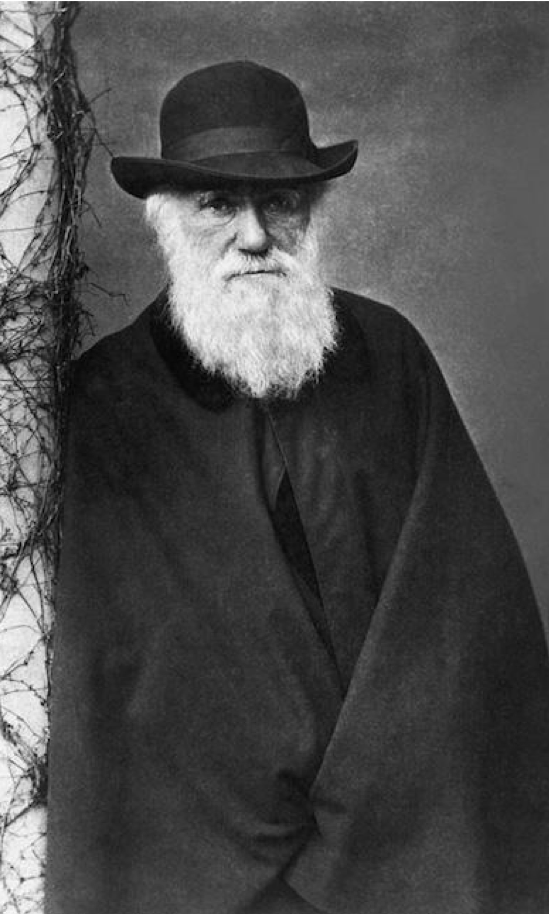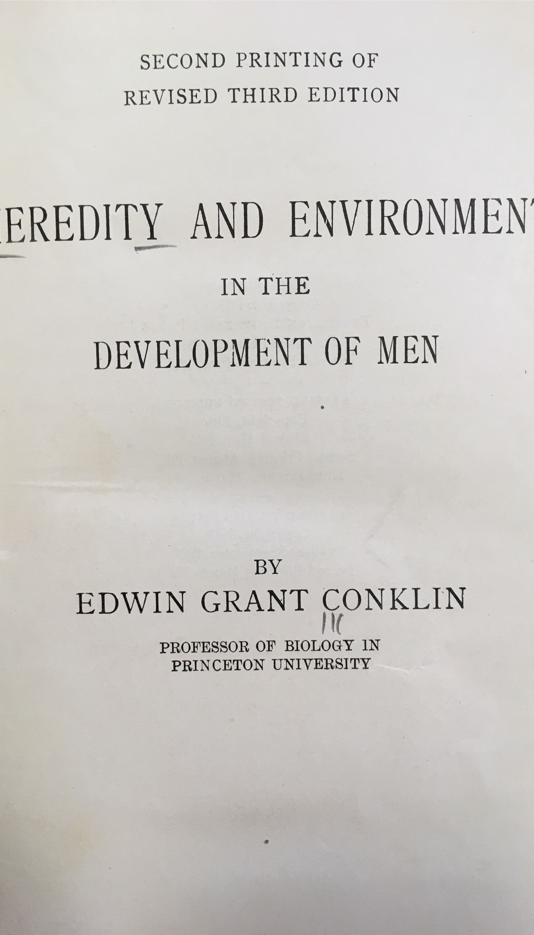
Archive Exhibit 1: Historical Context

Eugenics was a popular movement in many countries. In the United States, different forms of eugenics were supported by professional biologists and broad sections of the American public from a range of political, religious, and ideological perspectives. Historians have drawn on a range of factors to explain the movement’s pervasive influence, briefly summarized here.
The Theory of Evolution:
Evolutionists’ collapse of the boundary between humans and animals inspired proponents of eugenics to ask: Shouldn’t the same, careful attention that is paid to breeding quality animals also be paid to breeding “quality humans”? Answering that question with a ‘Yes’ depended upon a willingness to both categorize human beings into groups and then declare who constituted “fit individuals” and/or “fit racial types.”
The War:
The tremendous loss of life (more than 9 million soldiers alone) during the Great War (1914-1918) inspired some to fear that the “fittest men” had just been culled in the trenches, while the “unfit” were left alone to breed. As a result, the U.S. War Department became interested in eugenicists’ work, including providing data for on the fitness of recruits to exhibits to the Second International Exhibition of Eugenics in 1921.
The Professionalization of Biology:
Biologists casting about for defenses of why they should receive both public and private funding cited eugenics as evidence their work was useful to American society. From naturalists to geneticists, various kinds of eugenics seemed to be a logical, applied extension of the study of variation, heredity, and evolution.
Industrialization, Urbanization, Immigration:
Demographic shifts led to increasing anxiety among the well-to-do, elites, and middle-classes that the “blood of the nation” was being swamped by “undesirable” immigrant populations from south-eastern Europe and Mexico. Meanwhile, lowering child mortality rates inspired anxieties that natural selection was no longer operating on human populations, especially among the urban poor.
Managerial Capitalism & the Rise of Experts:
An increasing emphasis on managing the economy and people, guided by scientists and efficiency experts, translated easily into seeing biologists as the experts-of-choice when it came to improving America’s “racial stock.”
Belief in Progress:
Eugenics was built on optimism that Science & Technology could provide the means of social, moral, and material Progress. Even the Great War failed to dampen enthusiasm for socially-engineered progress. If anything, the war inspired even more solutions for and improving “the race.”
Questions to ponder as you read further: Who was supposed to be in charge of “eugenic” decisions? Who was “anxious”? Who got to decide who was “unfit” and “fit”? What did proponents of eugenics mean by “race”?

Charles Darwin’s The Descent of Man and Selection in Relation to Sex (1871)
When Charles Darwin published his theory of evolution in 1859, he included just one sentence on human beings: “Light will be thrown on the origin of man and his history.” Twelve years later, in The Descent of Man, he wrote that, given human evolution was the result of natural selection, “civilised” societies’ protection of the “weak” was probably injurious to progress. We “do our utmost to check the process of elimination; we build asylums for the imbecile, the maimed, and the sick; we institute poor-laws; and our medical men exert their utmost skill to save the life of every one to the last moment. There is reason to believe that vaccination has preserved thousands, who from a weak constitution would formerly have succumbed to small-pox. Thus the weak members of civilised societies propagate their kind. No one who has attended to the breeding of domestic animals will doubt that this must be highly injurious to the race of man.” But Darwin also immediately wrote that he did not believe humanity could withhold sympathy for the “weak” – even at the “urging of hard reason” – without “deterioration in the noblest parts of our nature,” that is, the instinct of sympathy. As anti-evolutionist William Jennings Bryan later wrote, Darwin’s followers “were more hardened.”

Francis Galton’s Inquiries into Human Faculty and its Development (1883)
Charles Darwin’s cousin Francis Galton coined the term eugenics in 1883 in a footnote on p. 17 of his book Inquiries into Human Faculty and its Development. Galton also coined the phrase ‘Nature versus Nurture’ when acknowledging the difficulty of distinguishing between hereditary versus environmental influences on traits. His acknowledgement of that difficulty did not always result in caution in drawing conclusions. Galton argued, for example, that the fact men dominated lists of the most important works in literature, music, philosophy, etc., proved that men are naturally superior in intellect to women. Pervasive cultural norms influenced Galton’s conclusions about what Nature was like, including the origin of human difference and variation.

Edwin Grant Conklin’s Heredity and Environment (1915)
After the rediscovery of Mendel’s work in 1900 (it originally appeared in the 1860s) biologists quickly adopted his theory of heredity as a means of explaining the origin of individuals’ behavioral and moral tendencies. Princeton Professor of Biology Edwin Grant Conklin, for example, described a range of traits as dominant or recessive in his textbook HEREDITY AND ENVIRONMENT IN THE DEVELOPMENT OF MEN . Conklin’s textbook, originally published in 1915 by Princeton University Press, was reprinted several times. This edition is from 1920. In a section entitled ‘Control of Heredity: Eugenics’ Conklin wrote: ‘The worst types of mankind may be prevented from propagating, and the best types may be encouraged to increase and multiply. This is apparently the only way in which we may hope to improve permanently the human breed.’ (p. 276).

M.W. Ireland, Albert G. Love, and Charles B . Davenport, Defects Found in Drafted Men (Washington: Government Printing Office, 1920)
Harvard-trained biologist Charles B. Davenport, who later served as the director of the Eugenics Records Office, co-authored this report for the War Department (under the direction of The Surgeon General, M.W. Ireland) in 1920. The results were often cited within eugenic literature as evidence of the national, racial degeneration of the U.S. male population. The authors spoke of ‘constitutional (i.e. hereditary) limitations of the various races’ and described human beings as ‘breeding stock.’